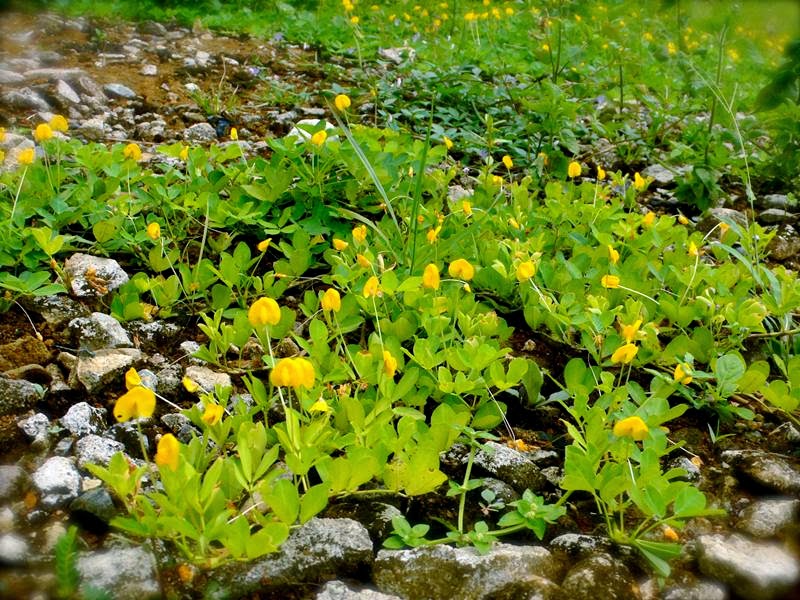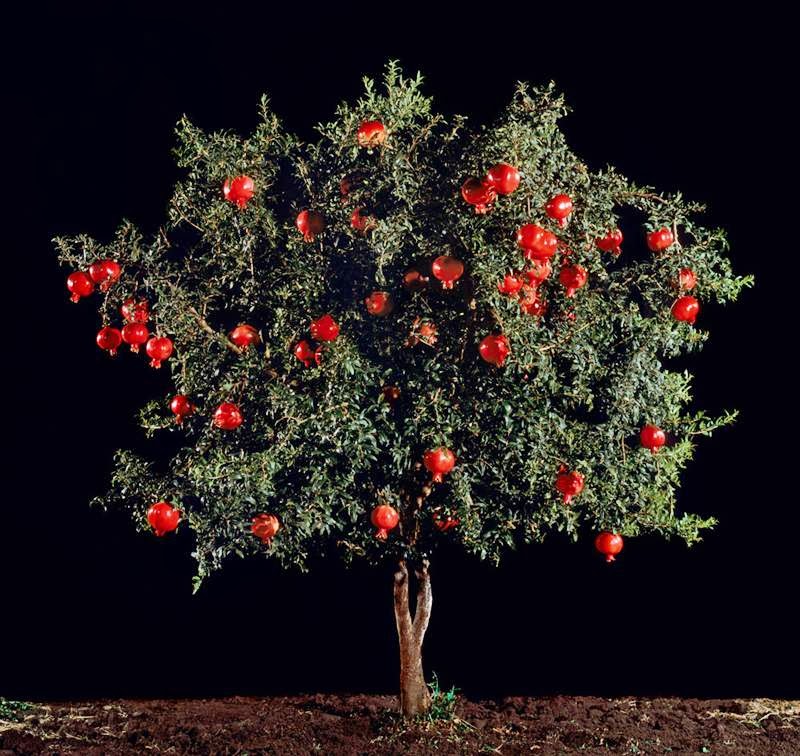Know How these Fruits, Vegetables & Spices Grow - We’ve all got a favorite fruit, vegetable or spice, but most of us probably don’t know where they come from or what their plant even looks like. That’s why we’ve compiled a list of delicious fruits, vegetables and spices showing how they’re grown.
PhotoCredit:01. Saffron - Saffron crocus grows to 20–30 cm (8–12 in) and bears up to four flowers, each with three vivid crimson stigmas, which are the distal end of a carpel. Together with the styles, or stalks that connect the stigmas to their host plant, the dried stigmas are used mainly in various cuisines as a seasoning and colouring agent. - Wikipedia
 PhotoCredit:
PhotoCredit:
02. Pineapple - The pineapple (Ananas comosus) is a tropical plant with edible multiple fruit consisting of coalesced berries, and the most economically significant plant in the Bromeliaceae family. Wikipedia
 PhotoCredit:
PhotoCredit:
03. Cacao - Cacao tree is handsome, 12 to 16 feet high; trunk about 5 feet long; wood light and white coloured; bark brown; Ieaves lanceolate, bright green, entire; flowers small reddish, almost odourless; fruit yellowy red, smooth; rind fleshcoloured; pulp white; when seeds are ripe they rattle in the capsule when shaken. botanical.com
PhotoCredit:PhotoCredit:
04. Peanut - The peanut, is an annual herbaceous plant growing 30 to 50 cm (1.0 to 1.6 ft) tall. The leaves are opposite, pinnate with four leaflets (two opposite pairs; no terminal leaflet); each leaflet is 1 to 7 cm (? to 2¾ in) long and 1 to 3 cm (? to 1 inch) across. Wikipedia
05. Cinnamon - Cinnamon is a spice obtained from the inner bark of several trees from the genus Cinnamomum that is used in both sweet and savoury foods. Wikipedia
PhotoCredit:
06. Vanilla - Vanilla is a flavor derived from orchids of the genus Vanilla, primarily from the Mexican species, flat-leaved vanilla. In 1837, Belgian botanist Charles François Antoine Morren discovered this fact and pioneered a method of artificially pollinating the plant. Wikipedia
PhotoCredit:
07. Kiwi - The kiwifruit has a fibrous, dull greenish-brown skin and bright green or golden flesh with rows of tiny, black, edible seeds. The fruit has a soft texture and a sweet but unique flavor. Wikipedia
08. Black Pepper - Black pepper is a flowering vine in the family Piperaceae, cultivated for its fruit, which is usually dried and used as a spice and seasoning. Black pepper is produced from the still-green unripe drupes of the pepper plant. Wikipedia
PhotoCredit:
09. Almond - The almond is a deciduous tree, growing 4–10 m (13–33 ft) in height, with a trunk of up to 30 cm (12 in) in diameter. The young twigs are green at first, becoming purplish where exposed to sunlight, then grey in their second year. The leaves are 3–5 inches long, with a serrated margin and a 2.5 cm (1 in) petiole. The flowers are white to pale pink, 3–5 cm (1–2 in) diameter with five petals, produced singly or in pairs and appearing before the leaves in early spring. Wikipedia
10. Avocado - The avocado is a tree native to Mexico and Central America, classified in the flowering plant family Lauraceae along with cinnamon, camphor and bay laurel. Wikipedia
PhotoCredit:
11. Starfruit - Starfruit, is also known as Carambola, is the fruit of Averrhoa carambola, a species of tree native to the Philippines, Indonesia, Malaysia, India, Bangladesh and Sri Lanka. Wikipedia
PhotoCredit:
12. Sesame - Sesame is a flowering plant in the genus Sesamum. Numerous wild relatives occur in Africa and a smaller number in India. It is widely naturalized in tropical regions around the world and is cultivated for its edible seeds, which grow in pods. Wikipedia
PhotoCredit:PhotoCredit:
13. Coffee - A coffee bean is a seed of the coffee plant, and is the source for coffee. It is the pit inside the red or purple fruit often referred to as a cherry. Even though they are seeds, they are incorrectly referred to as 'beans' because of their resemblance to true beans. Wikipedia
PhotoCredit:
14. Mango - The mango is a fleshy stone fruit belonging to the genus Mangifera, consisting of numerous tropical fruiting trees, that are cultivated mostly for edible fruits. The majority of these species are found in nature as wild mangoes. Wikipedia
PhotoCredit:
15. Cashew - The cashew tree is a tropical evergreen that produces the cashew nut and the cashew apple. Officially classed as Anacardium occidentale, it can grow as high as 14 metres, but the dwarf cashew, growing. Wikipedia
PhotoCredit:
16. Caper - Capparis plant that bears rounded, fleshy leaves and large white to pinkish-white flowers. Wikipedia
17. Persimmon - Persimmons are the edible fruit of a number of species of trees in the genus Diospyros. Diospyros is in the family Ebenaceae. The most widely cultivated species is the Asian persimmon, Diospyros kaki. Wikipedia
18. Brussels Sprout - The Brussels sprout is a cultivar in the Gemmifera group of cabbages, grown for its edible buds. The leafy green vegetables are typically 2.5–4 cm in diameter and look like miniature cabbages. Wikipedia
19. Artichoke - The globe artichoke is a variety of a species of thistle cultivated as a food. The edible portion of the plant consists of the flower buds before the flowers come into bloom. Wikipedia
20. Tea Plant - The broad leaf variety, plant produces dark green, shiny leaves and small, white blossoms. thefragrantleaf.com
21. Pistachio - The tree produces a seed. Pistacia vera often is confused with other species in the genus Pistacia that are also known as pistachio. Their seeds which are much smaller and have a shell that is not hard. Wikipedia
22. Pomegranate - Punica granatum is grown as a fruit crop plant, and as ornamental trees and shrubs in parks and gardens. Mature specimens can develop sculptural twisted bark multi-trunks and a distinctive overall form. Wikipedia

































superb..................collection of these information with pics
ReplyDeleteGreat collection
ReplyDeleteGreat
ReplyDelete